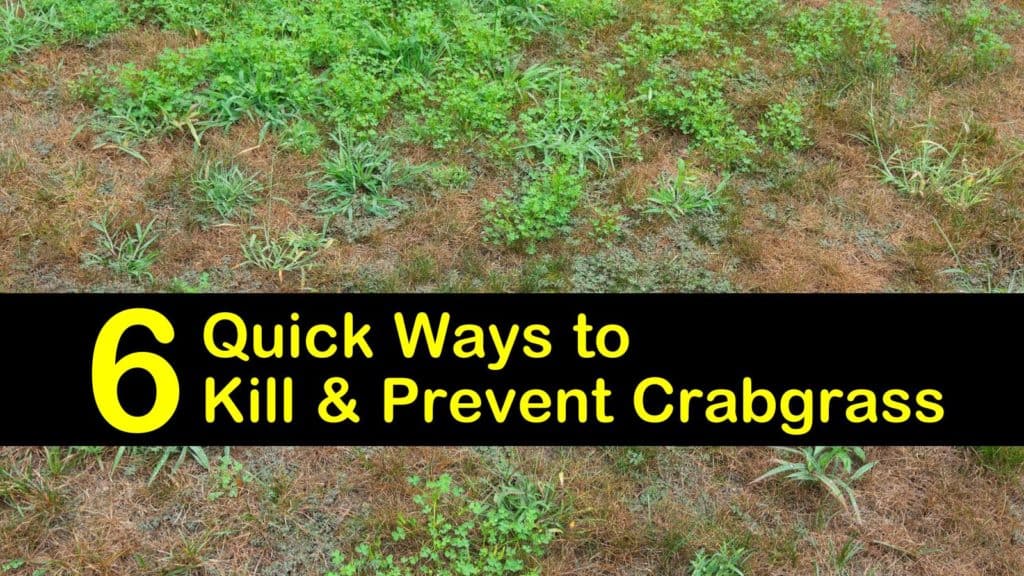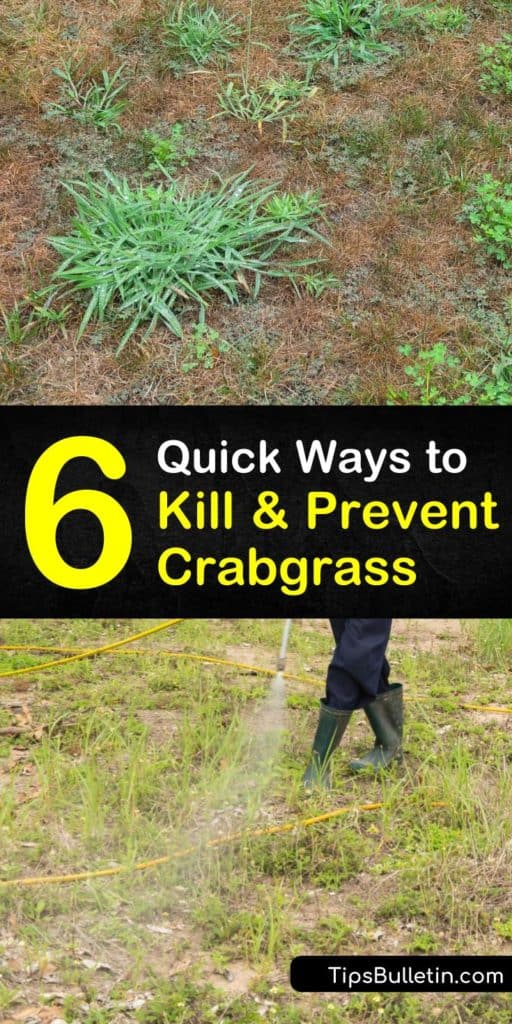Crabgrass is a fast-growing weed that often gets mistaken for regular patches of lawn. Its ability to blend in with your grass, combined with its remarkable rate of growth, makes it a nuisance most homeowners don’t ever want to encounter. We’ve included some strategies for how to prevent crabgrass from growing in your yard in the first place.
As an annual weed, crabgrass lives and dies all within the same year. However, this doesn’t mean you are free from worry during the dormant period of this plant. Because crabgrass is so invasive, developing a yearly maintenance routine that keeps your lawn free and clear of the species is essential.
Most homeowners turn to crabgrass preventer products from the stores, since these are most effective. However, even potent pre-emergent herbicides amount to nothing if not applied correctly or during the appropriate times. These helpful tips show you when to use crabgrass preventer products and how to utilize them whenever necessary.

Effective Ways to Prevent Crab Grass from Overtaking Your Lawn
Crabgrass is a warm season plant that produces hundreds of thousands of seeds throughout its growing season. Since it often blends in with other grasses like tall fescues, this grass type weed multiples and spreads into a full-blown problem long before the property owner realizes it.
Setting up a routine crabgrass prevention process each year keeps your yard under control by stopping seeds from germinating from the start.
Dithipyr: A Powerful Crabgrass Preventer
One of the best pre-emergent herbicides to use on crabgrass is Dithiopyr. This chemical compound works well on most ornamental plants and turfgrass to attack crabgrass seedlings before they germinate.

If applied too late, it also acts as a mild post-emergent control technique and also kills the dandelion population. The effects of this herbicide last for up to four months, which is why it is essential not to reseed lawns during that length of time.
Some versions of this crabgrass preventer mix it with lawn fertilizer to improve the condition of the grass. Apply these in early spring for best results.
Mowing Lawns for Crabgrass Control
One strategy to control crabgrass is to set your mower at a higher mowing height. Doing this allows the grass to grow in healthier and fuller, leaving no room for crabgrass to thrive.
When grass blades are trimmed too low, new grass is unable to develop correctly, which opens up bare spots. These areas are where this grassy weed infiltrates your property with ease.
Since a healthy lawn is the best way to combat new growth, another way to help is by adding the mulching option when mowing your yard. Doing this is another fantastic way to keep lawn grasses healthy while also preventing crabgrass from receiving the necessary sunlight to flourish.
How to Prevent Crabgrass without Hurting Your Lawn
Another form of pre-emergent weed control and one of the most natural ways to kill grass and invasive weeds is corn gluten. This mixture works in a similar fashion to Dithiopyr by preventing crabgrass seeds from taking root.
Use a spreader to apply an even coating of corn gluten over a large area or sprinkle by hand in a smaller location. If crabgrass germination has already taken place at the time of application, the corn gluten adversely reacts by fertilizing the weeds it’s meant to kill.
As a result, timing is critical to prevent a crabgrass infestation. Other tips to protect your lawn include waiting to treat lawns with new seeding until you’ve mowed them at least three times.
Also, do not aerate or thatch lawns, as this breaks up the chemical compounds in the soil. Spread the pre-emergent evenly to prevent the crabgrass from growing in open pockets of the lawn.
Killing Crabgrass with Vinegar
The most common way to kill broadleaf weeds is with a vinegar-based spray. This same mixture works wonders as a crabgrass killer and is one of the best ways to get rid of crabgrass once the plant produces new shoots. A phenomenal dandelion killer for lawns, this simple formula requires only two ingredients.
For this DIY grass killer, start by mixing the two items, either in a bucket or large spray bottle. Coat the plant in the solution, but do not get it on other areas of the lawn.
Vinegar is a nonselective vegetation killer and causes any plant it comes into contact with to wither and dry out. It doesn’t discriminate between plants you want to keep and those you don’t so spray carefully. Vinegar is also effective to kill nutsedge, kudzu, and any other weeds or plants that threaten your beautiful lawn.
Try Post-Emergent Herbicide
If crabgrass plants have already taken root in your lawn, then the only way to rid your yard of them is by using a post-emergent herbicide. Both DIY and store-bought versions of these exist and are most effective when applied in mid to late summer.
The best way to get rid of crabgrass also kills all forms of vegetation, especially grasses and other plants you may want to keep, so make sure only to spray areas with crabgrass. If the weed seems to take over the majority of the yard before you have the chance to treat it, push all attempts to kill crabgrass to the early fall instead.
Doing this allows you to attack plants when they are a little more vulnerable and entering the dormant phase of their development. After eliminating the weeds with the herbicide, apply a pre-emergent next spring to prevent new growth in areas you may have treated or those you may have missed the first time.
When to Apply Crabgrass Preventer
Knowing when to put down crabgrass preventer is just as critical as what type of ingredients to use. Most recommend adding pre-emergents in either late winter or early spring and repeating the process the next year.
Another option, however, is to pay close attention to the weather patterns in your area. Because all parts of the United States come into their seasons on different schedules, the best way to identify optimal prevention times is by noting soil temperatures.
Once temperatures reach 55℉, add the pre-emergents to the soil. If you notice shrubs or trees budding, this is also a good indication that weather conditions are ideal for adding the component.
Hopefully, these lawn care tips for keeping crabgrass at bay provided you with all the extra help you require. While some lawns may require additional maintenance and treatments in severe cases, consistency is the greatest asset to any plan. Knowing when to apply crabgrass preventer is equally as important when it comes to stopping new growth.

If you found these crabgrass preventer products helpful, then please remember to share how to prevent crabgrass with friends and family on Facebook and Pinterest.